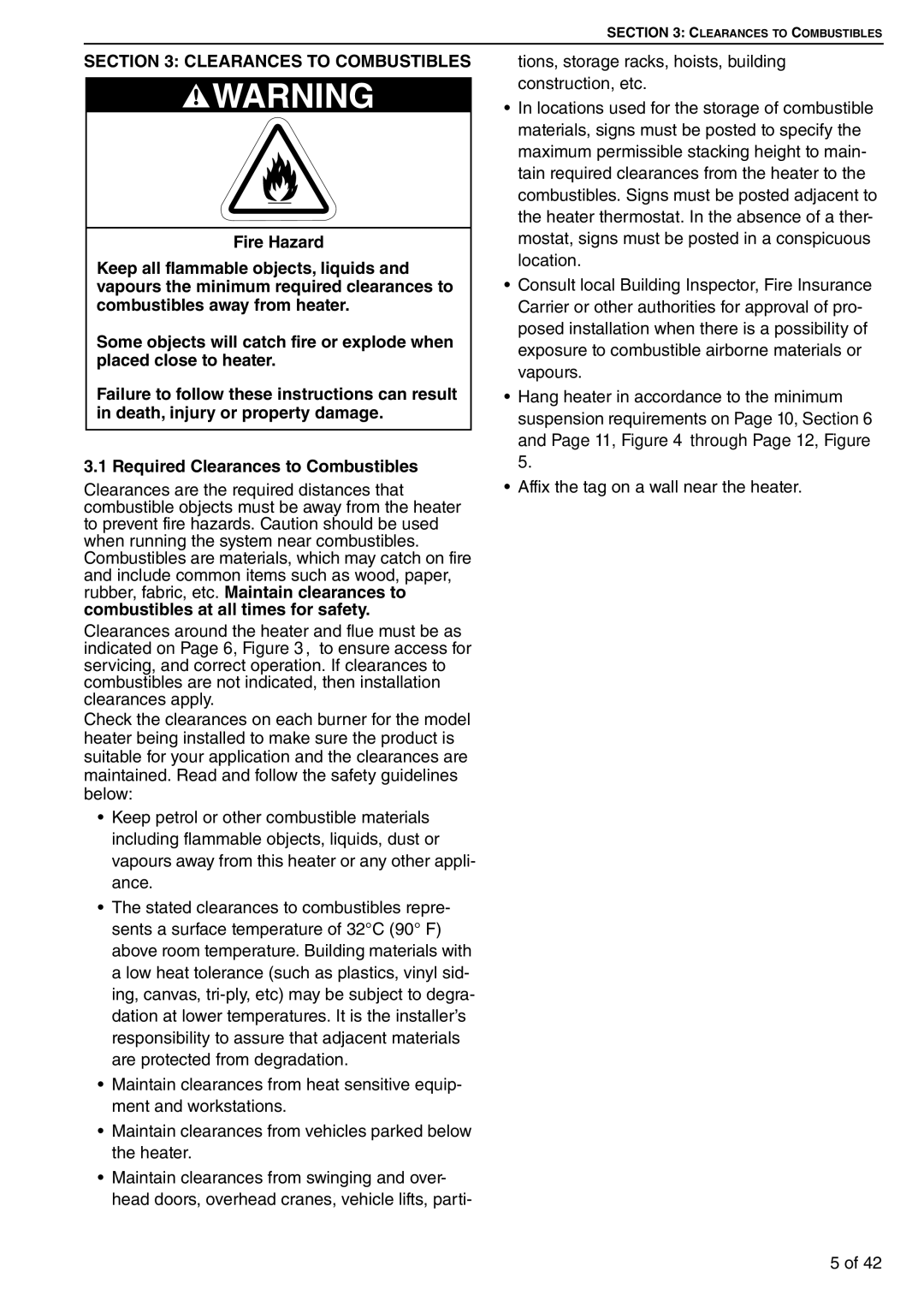CTCU 32, CTCU 7, CTCU 22, CTCU 11, CTCU 15 specifications
Roberts Gorden offers a diverse range of high-performance make-up air units known as the CTCU series, which includes models CTCU 22, CTCU 15, CTCU 7, CTCU 27, and CTCU 11. Each model is designed to deliver efficient and reliable air management solutions for various industrial and commercial applications.The CTCU 22 is renowned for its robust construction and powerful performance, providing exceptional air flow rates that can accommodate larger facilities. It features a high-efficiency heat exchanger and a multi-stage filtration system that ensures optimal indoor air quality while reducing energy consumption. This model is particularly beneficial for environments requiring high volumes of tempered air, making it ideal for manufacturing plants and warehouses.
CTCU 15, on the other hand, is slightly smaller yet offers remarkable versatility. With an integrated control system, it can easily adapt to changing operational demands, making it a preferred choice for businesses that experience variable occupancy levels. Its quiet operation minimizes workplace noise, and its energy-efficient design significantly cuts operational costs.
CTCU 7 is specifically engineered for smaller spaces without compromising performance. This unit features compact dimensions while still delivering adequate air flow for localized heating and ventilation needs. The advanced temperature control algorithms allow for precise adjustments, ensuring a comfortable environment even in tight areas.
CTCU 27 stands out with its advanced technology that includes integrated smart controls. This model offers real-time monitoring and data analytics to optimize performance and enhance energy efficiency. Its ability to connect with existing building management systems makes it an appealing choice for modern facilities aiming to improve sustainability initiatives.
The CTCU 11 is characterized by its user-friendly interface and maintenance accessibility. It is built with durable materials that extend its lifespan, ensuring long-term reliability. This unit is ideal for applications where regular maintenance is challenging, as its design allows for easy access to all critical components.
In summary, Roberts Gorden's CTCU series encompasses a range of units catered to various industrial needs. With features focusing on efficiency, flexibility, and user-friendliness, these models deliver high-quality air management solutions to improve indoor environments while reducing energy consumption.

